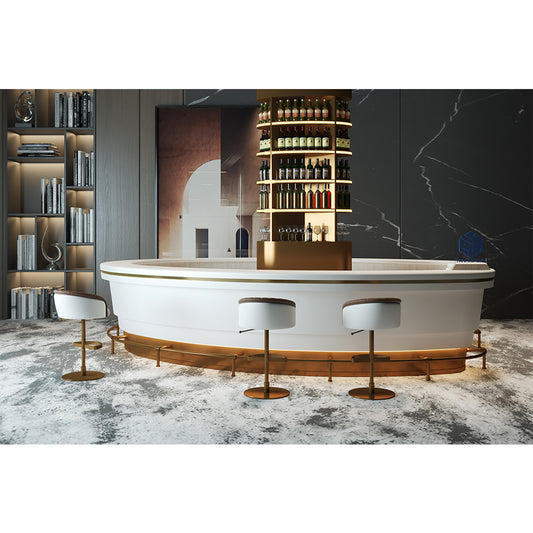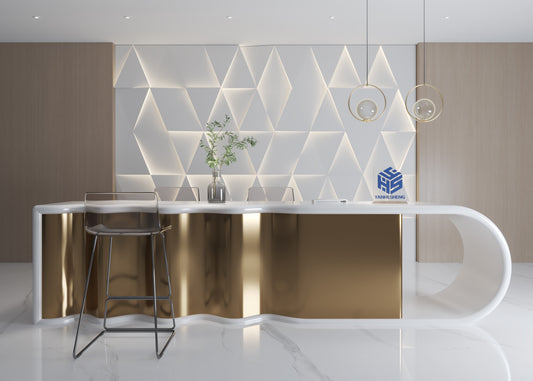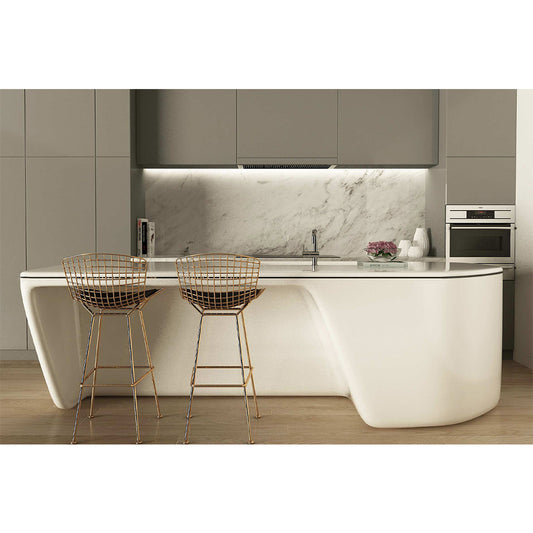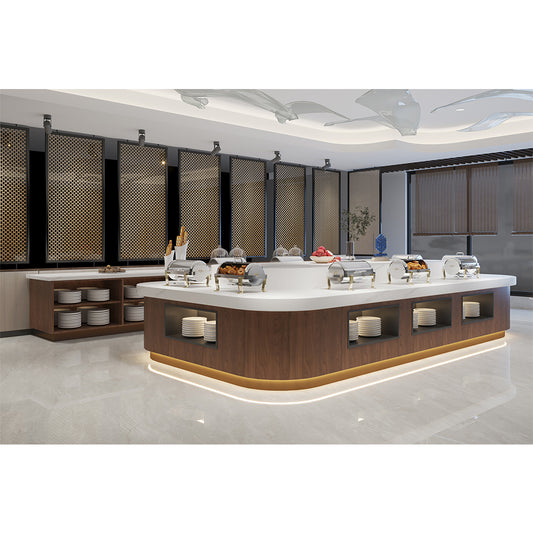Barstools and counter stools are essential pieces of furniture that serve both functional and aesthetic purposes in kitchens, bars, and dining spaces. Understanding the difference between the two, how to choose the right one, and their various styles and features will help you create a space that is both comfortable and stylish. Let's break down everything you need to know about barstools and counter stools.
1. Understanding the Basics: Barstools vs. Counter Stools
The primary difference between barstools and counter stools lies in their height. This distinction is crucial for ensuring comfort and usability in your space.
-
Counter Stools: Typically used for kitchen counters or islands, counter stools have a seat height of 24 to 26 inches (61 to 66 cm). They pair well with counter heights of 34 to 36 inches (86 to 91 cm).
-
Barstools: Barstools are taller, with a seat height ranging from 28 to 30 inches (71 to 76 cm). These are designed for bar tables and counters that are around 40 to 42 inches (102 to 107 cm) high.
Choosing the Right Height:
- Measure the height of your counter or bar before purchasing stools to ensure a proper fit.
- Aim for about 10 to 12 inches (25 to 30 cm) of space between the seat and the underside of the counter or bar for comfortable legroom.
2. Styles and Designs
Both barstools and counter stools come in a variety of styles, from modern to traditional, to suit different tastes and interior designs.
Popular Styles:
- Backless Stools: These offer a minimalist look and are great for saving space, especially in smaller areas. They can easily slide under the counter when not in use.
- Stools with Backs: For added comfort, especially for longer periods of sitting, stools with backs provide better support. They are available in various styles, from low-profile backs to full-height backs.
- Swivel Stools: These stools allow for easy movement, making them a practical choice for social settings where people may need to turn to engage in conversation.
- Armrest Stools: Stools with armrests provide additional comfort but may take up more space. They’re ideal for areas where comfort is a priority over space-saving.
- Adjustable Stools: Perfect for versatile spaces, these stools can be adjusted to different heights, accommodating various counter or bar heights.
3. Materials and Finishes
The material and finish of your barstools or counter stools will significantly impact the overall look and feel of your space, as well as their durability.
Common Materials:
- Wood: Offers a classic and warm feel, available in various stains and finishes. Wooden stools can range from rustic to elegant, depending on the design.
- Metal: Often used in modern or industrial designs, metal stools are durable and easy to clean. They can be finished in a variety of ways, from polished chrome to matte black.
- Upholstered: Stools with upholstered seats provide added comfort and a touch of luxury. They come in a wide range of fabrics, from leather to woven textiles, and can introduce color and texture to your space.
- Plastic or Acrylic: Lightweight and often stackable, these materials are ideal for modern, minimalist spaces. They are also easy to clean and maintain.
Finish Considerations:
- Choose a finish that complements the other elements in your space, such as cabinetry, countertops, and flooring.
- Consider the durability of the finish, especially if the stools will be used frequently or in high-traffic areas.
4. Comfort and Ergonomics
Comfort is key when selecting barstools or counter stools, especially if they will be used for extended periods, such as during meals or social gatherings.
Comfort Features:
- Seat Cushioning: If you’re looking for comfort, opt for stools with padded or upholstered seats. Hard seats, while stylish, may be less comfortable for long-term sitting.
- Footrests: A built-in footrest can make a significant difference in comfort, particularly for bar-height stools, where your feet might otherwise dangle.
- Back Support: Stools with backs, especially those that are ergonomically designed, provide better support for longer sitting sessions.
- Swivel and Adjustability: Swivel stools allow for easy movement, while adjustable stools offer flexibility in seat height, making them adaptable to various counter heights and user preferences.
5. Practical Considerations
When choosing barstools or counter stools, consider practical aspects like space, maintenance, and how they fit into your daily routine.
Space Efficiency:
- Measure the space where you plan to place the stools to ensure they fit comfortably without overcrowding the area.
- If space is limited, consider backless stools or those with a compact design that can be tucked away when not in use.
Maintenance:
- Consider the ease of cleaning the stools, especially in a kitchen environment where spills are common.
- Materials like metal and plastic are easy to wipe down, while upholstered stools may require more maintenance, particularly with lighter fabrics.
Durability:
- Choose stools made from high-quality materials that can withstand daily use, especially if they are in a high-traffic area.
- Check the construction, including the joints and the base, to ensure they are sturdy and well-made.
6. Matching Your Decor
Your stools should enhance the overall aesthetic of your space, whether you’re going for a cohesive look or adding a contrasting element for visual interest.
Decor Matching Tips:
- Color Coordination: Match the color of your stools with other elements in the room, like cabinets, countertops, or wall colors, for a harmonious look.
- Mixing Materials: Don’t be afraid to mix materials, such as metal stools with wooden countertops, for a contemporary look.
- Statement Pieces: Use bold, colorful stools as a statement piece to add personality and vibrancy to your space.
7. Shopping Tips
Before making a purchase, consider these shopping tips to ensure you choose the perfect barstools or counter stools:
- Test Before You Buy: If possible, try out the stools in person to check for comfort, stability, and overall feel.
- Measure Your Space: Accurately measure your counter height and the space available for stools to avoid buying pieces that are too tall, too short, or too wide.
- Read Reviews: Look at customer reviews to get an idea of the quality, comfort, and durability of the stools you’re considering.
- Budget Considerations: Set a budget before you start shopping, but be flexible if you find a piece that offers superior quality or design that fits your space perfectly.
Conclusion
Barstools and counter stools are more than just seating—they’re an integral part of your kitchen, dining, or entertainment space. By considering factors like height, style, material, comfort, and practicality, you can find the perfect stools that not only fit your functional needs but also enhance the overall aesthetic of your home. Whether you’re going for a sleek, modern look or a cozy, rustic vibe, the right stools can tie your whole space together, making it both inviting and stylish.





